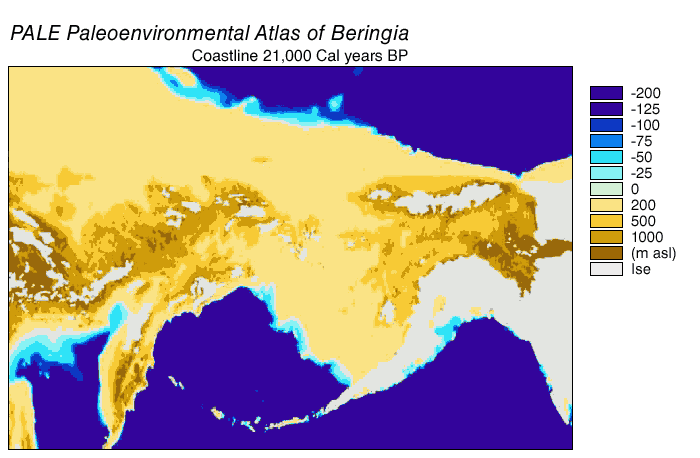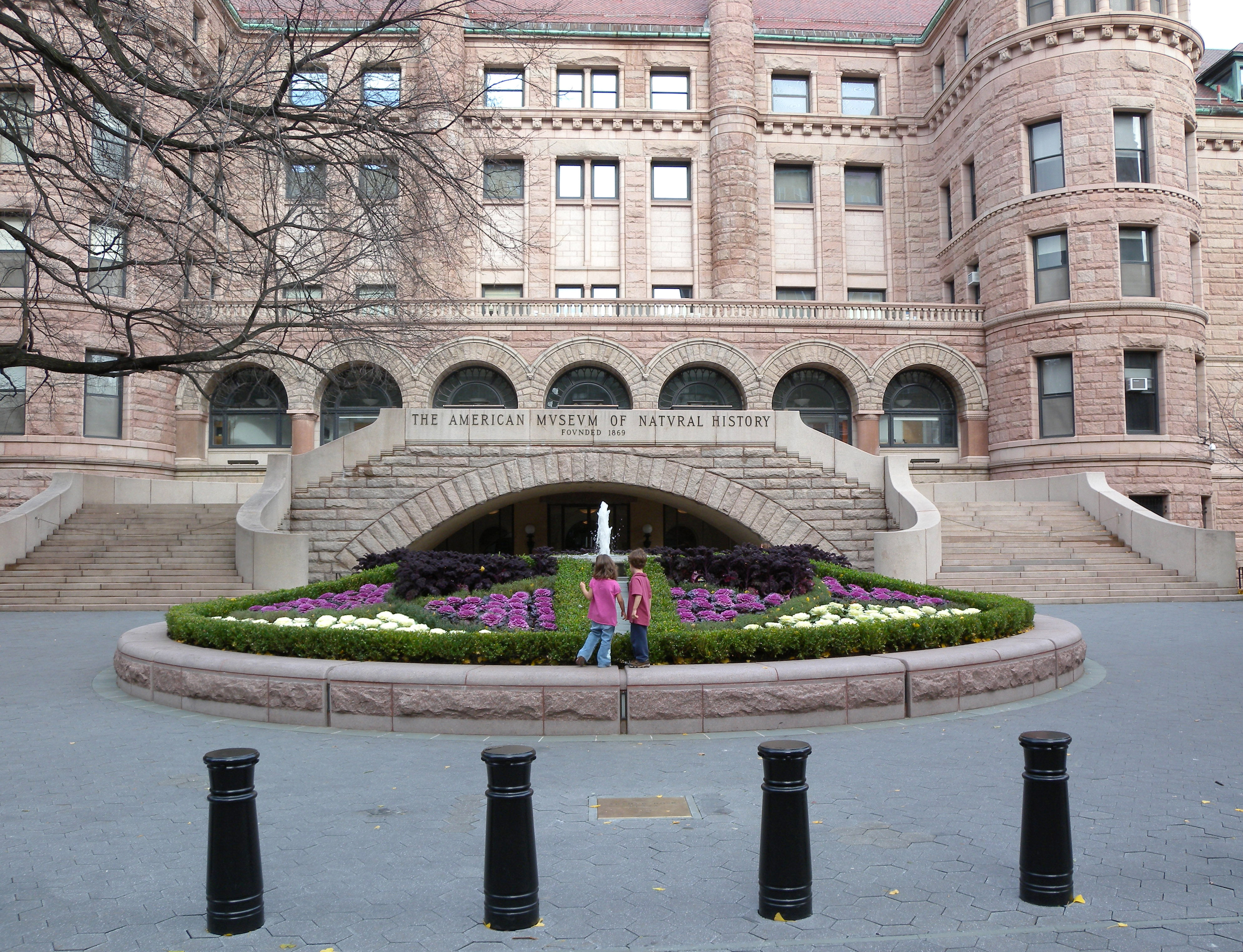|
Beringian Wolf
The Beringian wolf is an extinct population of wolf (''Canis lupus'') that lived during the Ice Age. It inhabited what is now modern-day Alaska, Yukon, and northern British Columbia. Some of these wolves survived well into the Holocene. The Beringian wolf is an ecomorph of the gray wolf and has been comprehensively studied using a range of scientific techniques, yielding new information on their prey species and feeding behaviors. It has been determined that these wolves are morphologically distinct from modern North American wolves and genetically basal to most modern and extinct wolves. The Beringian wolf has not been assigned a subspecies classification and its relationship with the extinct European cave wolf (''Canis lupus spelaeus'') is not clear. The Beringian wolf was similar in size to the modern Alaskan Interior wolf (''Canis lupus pambasileus'') and other Late Pleistocene gray wolves but more robust and with stronger jaws and teeth, a broader palate, and larger ca ... [...More Info...] [...Related Items...] OR: [Wikipedia] [Google] [Baidu] |
Late Pleistocene
The Late Pleistocene is an unofficial Age (geology), age in the international geologic timescale in chronostratigraphy, also known as the Upper Pleistocene from a Stratigraphy, stratigraphic perspective. It is intended to be the fourth division of the Pleistocene Epoch within the ongoing Quaternary Period. It is currently defined as the time between 129,000 and c. 11,700 years ago. The late Pleistocene equates to the proposed Tarantian Age of the geologic time scale, preceded by the officially ratified Chibanian (commonly known as the Middle Pleistocene). The beginning of the Late Pleistocene is the transition between the end of the Penultimate Glacial Period and the beginning of the Last Interglacial around 130,000 years ago (corresponding with the beginning of Marine Isotope Stage 5). The Late Pleistocene ends with the termination of the Younger Dryas, some 10th millennium BC, 11,700 years ago when the Holocene Epoch began. The term Upper Pleistocene is currently in use as a p ... [...More Info...] [...Related Items...] OR: [Wikipedia] [Google] [Baidu] |
Dire Wolf
The dire wolf (''Aenocyon dirus'' ) is an Extinction, extinct species of Caninae, canine which was native to the Americas during the Late Pleistocene and Early Holocene epochs (125,000–10,000 years ago). The species was named in 1858, four years after the first Fossil, specimen had been found. Two subspecies are proposed, ''Aenocyon dirus guildayi'' and ''Aenocyon dirus dirus'', but this assignment has been recently considered questionable. The largest collection of its fossils has been obtained from the Rancho La Brea Tar Pits in Los Angeles. Dire wolf remains have been found across a broad range of habitats including plains, grasslands, and some Montane ecosystem, forested mountain areas of North America and the arid Savanna#Savanna ecoregions, savanna of South America. The sites range in elevation from sea level to . Dire wolf fossils have rarely been found north of 42nd parallel north, 42°N latitude; there have been only five unconfirmed records above this latitude. This ... [...More Info...] [...Related Items...] OR: [Wikipedia] [Google] [Baidu] |
Stanley John Olsen
Stanley John Olsen (24 June 1919 – 23 December 2003) was an American vertebrate paleontologist and one of the founding figures of zooarchaeology in the United States. Olsen was also recognized as an historical archaeologist and scholar of United States military insignia, especially buttons of the American Colonial through Civil War periods. He was the father of John W. Olsen. Early life and military service Stanley Olsen was born in Akron, Ohio to John Mons Olsen (of Bergen, Norway) and Louise Marquardt (of Akron), the second of two sons. After his graduation from high school in 1938, Olsen worked as a tool and die maker at the National Rubber Machinery Company in Akron until his marriage to Eleanor Louise Vinez (1917–2016) in 1942. He subsequently enlisted in the United States Navy, achieving the rank of machinist mate first class while serving aboard the , ''Bunker Hill'' and ''Wyoming'', and at naval bases on the U.S. East Coast and at Mare Island Navy Yard, California, ... [...More Info...] [...Related Items...] OR: [Wikipedia] [Google] [Baidu] |
Paleontology
Paleontology, also spelled as palaeontology or palæontology, is the scientific study of the life of the past, mainly but not exclusively through the study of fossils. Paleontologists use fossils as a means to classify organisms, measure geologic time, and assess the interactions between prehistoric organisms and their natural environment. While paleontological observations are known from at least the 6th century BC, the foundation of paleontology as a science dates back to the work of Georges Cuvier in 1796. Cuvier demonstrated evidence for the concept of extinction and how life of the past was not necessarily the same as that of the present. The field developed rapidly over the course of the following decades, and the French word ''paléontologie'' was introduced for the study in 1822, which was derived from the Ancient Greek word for "ancient" and words describing relatedness and a field of study. Further advances in the field accompanied the work of Charles Darwin ... [...More Info...] [...Related Items...] OR: [Wikipedia] [Google] [Baidu] |
Nomen Nudum
In Taxonomy (biology), taxonomy, a ''nomen nudum'' ('naked name'; plural ''nomina nuda'') is a designation which looks exactly like a scientific name of an organism, and may have originally been intended to be one, but it has not been published with an adequate description. This makes it a "bare" or "naked" name, which cannot be accepted as it stands. A largely equivalent but much less frequently used term is ''nomen tantum'' ("name only"). Sometimes, "''nomina nuda''" is erroneously considered a synonym for the term "unavailable names". However, not all unavailable names are ''nomina nuda'' which applies to published names, ''i.e.'' any published name that does not fulfill the requirements of Article 12 (if published before 1931) or Article 13 (if published after 1930). In zoology According to the rules of zoological nomenclature a ''nomen nudum'' is unavailable name, unavailable; the glossary of the ''International Code of Zoological Nomenclature'' gives this definition: And ... [...More Info...] [...Related Items...] OR: [Wikipedia] [Google] [Baidu] |
Childs Frick
Childs Frick (March 12, 1883 - May 8, 1965) was an American vertebrate paleontologist. He was a trustee of the American Museum of Natural History and a major benefactor of its Department of Paleontology, which in 1916 began a long partnership with him. He established its Frick Laboratory. He also made many expeditions to the American West, and his efforts helped to shape an understanding of the evolution of North American camels. By employing many field workers, Frick accumulated over 200,000 fossil mammals, which later were donated to the Museum. Biography Frick was born in Pittsburgh, Pennsylvania, the son of the coke and steel magnate Henry Clay Frick (1849–1919) and Adelaide Howard Childs. He grew up at the family's Pittsburgh estate, Clayton, although the family later moved in 1905 to New York City. He developed his lifelong love for animals playing in the wooded grounds and steep hills behind Clayton, later dedicated as Frick Park. He attended Shady Side Academy ... [...More Info...] [...Related Items...] OR: [Wikipedia] [Google] [Baidu] |
University Of Alaska
The University of Alaska Fairbanks (UAF or Alaska) is a public land-, sea-, and space-grant research university in College, Alaska, United States, a suburb of Fairbanks. It is the flagship campus of the University of Alaska system. UAF was established in 1917 and opened for classes in 1922. Originally named the Alaska Agricultural College and School of Mines, it became the University of Alaska in 1935. Fairbanks-based programs became the University of Alaska Fairbanks in 1975. UAF is classified among "R2: Doctoral Universities – High research activity." In addition to the Fairbanks Troth Yeddha' campus, UAF encompasses six rural and urban campuses: Bristol Bay Campus in Dillingham; Chukchi Campus in Kotzebue; the Fairbanks-based Interior Alaska Campus, which serves the state's rural Interior; Kuskokwim Campus in Bethel; Northwest Campus in Nome; and the UAF Community and Technical College, with headquarters in downtown Fairbanks. UAF is also the home of UAF eCampus, wh ... [...More Info...] [...Related Items...] OR: [Wikipedia] [Google] [Baidu] |
American Museum Of Natural History
The American Museum of Natural History (AMNH) is a natural history museum on the Upper West Side of Manhattan in New York City. Located in Theodore Roosevelt Park, across the street from Central Park, the museum complex comprises 21 interconnected buildings housing 45 permanent exhibition halls, in addition to a planetarium and a library. The museum collections contain about 32 million specimens of plants, animals, fungi, fossils, minerals, rocks, meteorites, human remains, and human cultural artifacts, as well as specialized collections for frozen tissue and genomic and astrophysical data, of which only a small fraction can be displayed at any given time. The museum occupies more than . AMNH has a full-time scientific staff of 225, sponsors over 120 special field expeditions each year, and averages about five million visits annually. The AMNH is a private 501(c)(3) organization. The naturalist Albert S. Bickmore devised the idea for the American Museum of Natural History in 1 ... [...More Info...] [...Related Items...] OR: [Wikipedia] [Google] [Baidu] |
Genus
Genus (; : genera ) is a taxonomic rank above species and below family (taxonomy), family as used in the biological classification of extant taxon, living and fossil organisms as well as Virus classification#ICTV classification, viruses. In binomial nomenclature, the genus name forms the first part of the binomial species name for each species within the genus. :E.g. ''Panthera leo'' (lion) and ''Panthera onca'' (jaguar) are two species within the genus ''Panthera''. ''Panthera'' is a genus within the family Felidae. The composition of a genus is determined by taxonomy (biology), taxonomists. The standards for genus classification are not strictly codified, so different authorities often produce different classifications for genera. There are some general practices used, however, including the idea that a newly defined genus should fulfill these three criteria to be descriptively useful: # monophyly – all descendants of an ancestral taxon are grouped together (i.e. Phylogeneti ... [...More Info...] [...Related Items...] OR: [Wikipedia] [Google] [Baidu] |
Species
A species () is often defined as the largest group of organisms in which any two individuals of the appropriate sexes or mating types can produce fertile offspring, typically by sexual reproduction. It is the basic unit of Taxonomy (biology), classification and a taxonomic rank of an organism, as well as a unit of biodiversity. Other ways of defining species include their karyotype, DNA sequence, morphology (biology), morphology, behaviour, or ecological niche. In addition, palaeontologists use the concept of the chronospecies since fossil reproduction cannot be examined. The most recent rigorous estimate for the total number of species of eukaryotes is between 8 and 8.7 million. About 14% of these had been described by 2011. All species (except viruses) are given a binomial nomenclature, two-part name, a "binomen". The first part of a binomen is the name of a genus to which the species belongs. The second part is called the specific name (zoology), specific name or the specific ... [...More Info...] [...Related Items...] OR: [Wikipedia] [Google] [Baidu] |
Climate Change (general Concept)
Present-day climate change includes both global warming—the ongoing increase in global average temperature—and its wider effects on Earth's climate system. Climate change in a broader sense also includes previous long-term changes to Earth's climate. The current rise in global temperatures is driven by human activities, especially fossil fuel burning since the Industrial Revolution. Fossil fuel use, deforestation, and some agricultural and industrial practices release greenhouse gases. These gases absorb some of the heat that the Earth radiates after it warms from sunlight, warming the lower atmosphere. Carbon dioxide, the primary gas driving global warming, has increased in concentration by about 50% since the pre-industrial era to levels not seen for millions of years. Climate change has an increasingly large impact on the environment. Deserts are expanding, while heat waves and wildfires are becoming more common. Amplified warming in the Arctic has cont ... [...More Info...] [...Related Items...] OR: [Wikipedia] [Google] [Baidu] |







